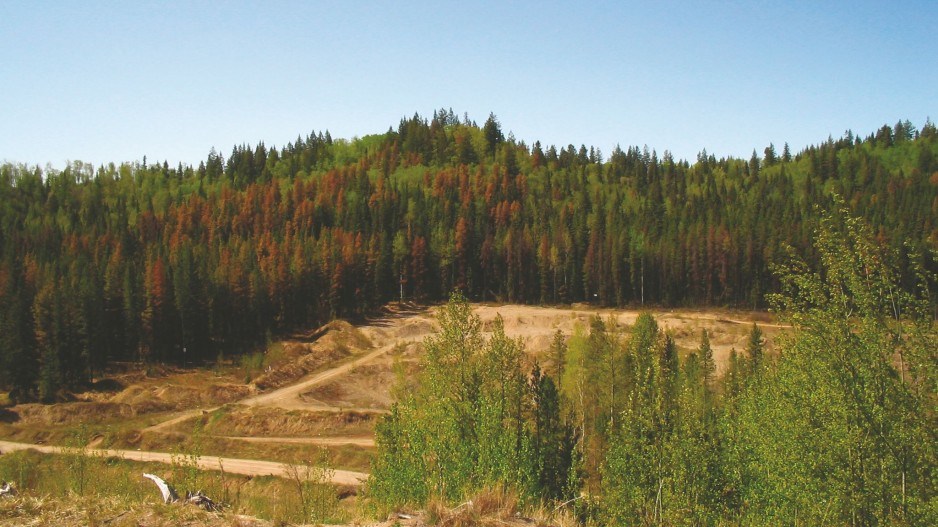It sounds like a laudable goal: increase access to timber that was hitherto off limits – or virtually worthless – to logging in order to keep sawmills running and people working in places like Burns Lake.
But Bob Simpson, independent MLA for Cariboo North, warns that the B.C. government's Mid-term Timber Supply Action Plan is shortsighted and will worsen a timber supply crunch resulting from the mountain pine beetle infestation and a decade of accelerated harvesting.
"The whole focus is to attempt to keep as many mills operating as long as possible, and that's a very shortsighted approach to a very complex problem," Simpson said.
The plan deepens the crisis of a dwindling wood supply and, if left unchecked, could lead to a collapse of the industry, he warned.
But the Council of Forest Industries (COFI) disagrees.
B.C. forestry companies understand they can't continue to harvest at the expanded annual allowable cut (AAC) levels that were set in response to the pine beetle infestation, said COFI vice-president Doug Routledge.
"We want to mitigate, as much as possible, falling too far below the pre-epidemic sustainable AACs. I don't see this as a shortsighted reaction to the crisis. It was the right, short-term, immediate measure."
The government's action plan acts on the recommendations of the Special Committee on Timber Supply. It contains three significant changes to existing forestry policy:
•adding marginal stands of timber to the AAC;
•opening old-growth and other "sensitive" areas that were hitherto off limits to logging, provided there is community support and scientific rationale for it; and
•reverting from volume-based to area-based tenure.
Between 2003 and 2004, in an effort to create a market-based price for logs, the government scrapped the appurtenancy requirements that tied timber in a region to local mills and moved from area-based tenures to a volume-based system.
But under the new plan, the government will dedicate forest tenures in the Burns Lake area to the rebuilt Babine Forest Products mill, which means that timber will no longer be available to other mills on the open market.
"This is not a traditional notion of appurtenancy," insisted B.C. forestry minister Steve Thomson.
In the Burns Lake case, the government will create new timber licences for First Nations in the region, which can then enter long-term supply agreements with Babine parent company Hampton Lumber Mills Inc.
"It's not a shift in policy," Thomson said. "It's working on strengthening that relationship between First Nations and a manufacturing organization in that area."
Simpson disagreed.
"If you look at what they're offering in Burns Lake, it's über-appurtenancy. No other company in this province has ever been guaranteed 100% log supply to a particular mill."
As for adding marginal timber to the AAC, Simpson said there's a reason those stands are considered marginal, and he believes they will be left largely uncut, at the expense of timber in the more accessible areas.
"They're going to falsely prop up the available cut," Simpson said. "It's just creative bookkeeping."
Again, Thomson disagrees. He pointed out that marginal timber and wood waste can be used for biomass (producing wood pellets, which are used as fuel) to add value to those marginal timber stands.
"There is merchantable timber in those stands," Thomson said. "There is the opportunity to have those stands combined with biomass opportunities." •




